Traits
(W_) dominant white (Natural)
Name: Dominant White
Base Genotype: W_
Skin Color: Skin becomes pink under white markings.
Eyes: Blue eyes, unless an eye color gene is present, such as Tiger, Oracle, or Arcane. Those genes will take precedence.
Description: The entire horse is white, obscuring all other coat colors, modifiers, and other white patterns. Although these horses have white ears, they are not deaf like is the case with Tobiano, Overo, or other white-patterned horses.
Design Guidance: At minimum, the entire horse is white. At maximum the entire horse is white. There is no other expression of this gene.
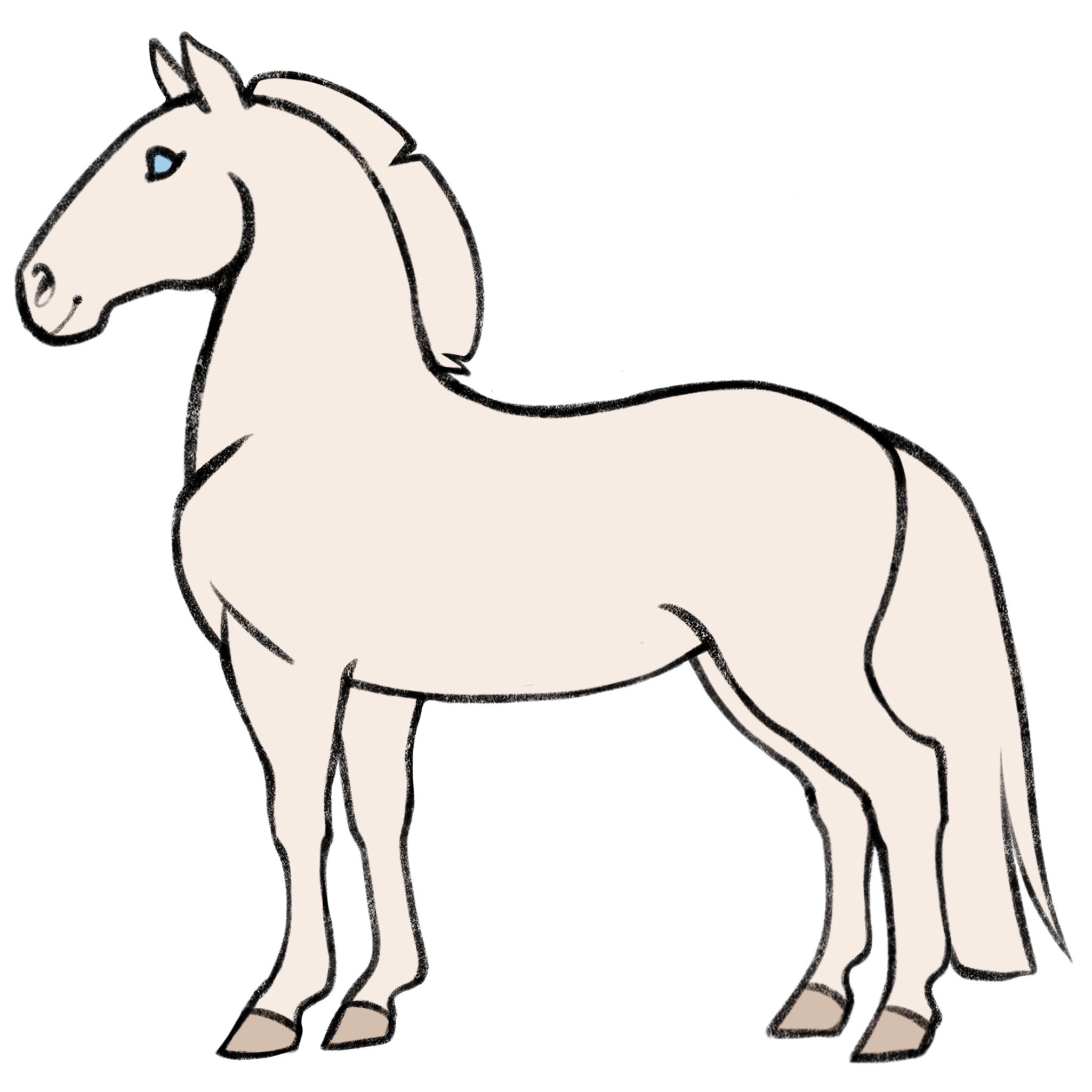
(SB_) sabino (Natural)
Name: sabino
Base Genotype: SB_
Skin Color: Skin becomes pink/mottled to match the mottled white markings.
Eyes: If a white marking touches an eye, it becomes blue. Heterochromia is common.
Description: Sabino causes large white patches to appear from the legs of the horse and upwards, just like Splash, except Sabino causes extreme mottling or "frosting" of the white pattern and roaning of the coat. Sabino roaning may cross the back of the horse, but the bulk of the white pattern originates from the legs and belly. Facial markings are usually large and frosted around the edges. Mottling of skin will occur wherever the white frosting turns the skin pink. Keep in mind that if a white patch turns the ears of the horse white, the horse is highly likely if not guaranteed to be deaf!
Design Guidance: At minimum, sabino can be invisible, or have mottled white leg and face markings.
At maximum, the white covers up to 75% of the horse from the bottom up, with the bulk of the white favoring the legs and belly. Edges of the white pattern are mottled dots or otherwise jagged. Ears are rarely turned white, but it happens (and may cause deafness). The mane and tail will turn white where white patterns touch. Skin becomes light colored where white patterns touch.
Examples of a chestnut sabino with minimal markings, a bay sabino with average markings, and a black sabino with more maximal markings.
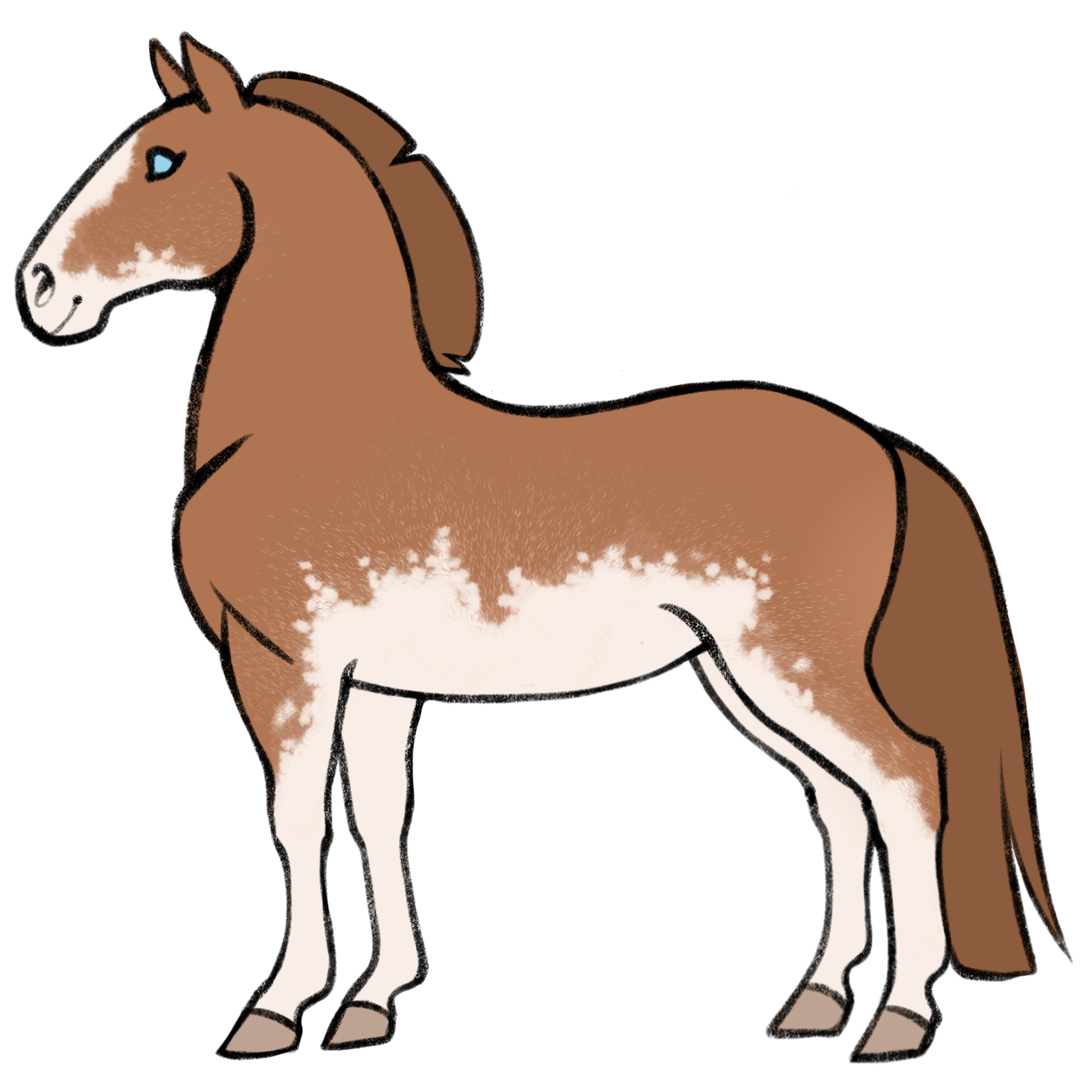
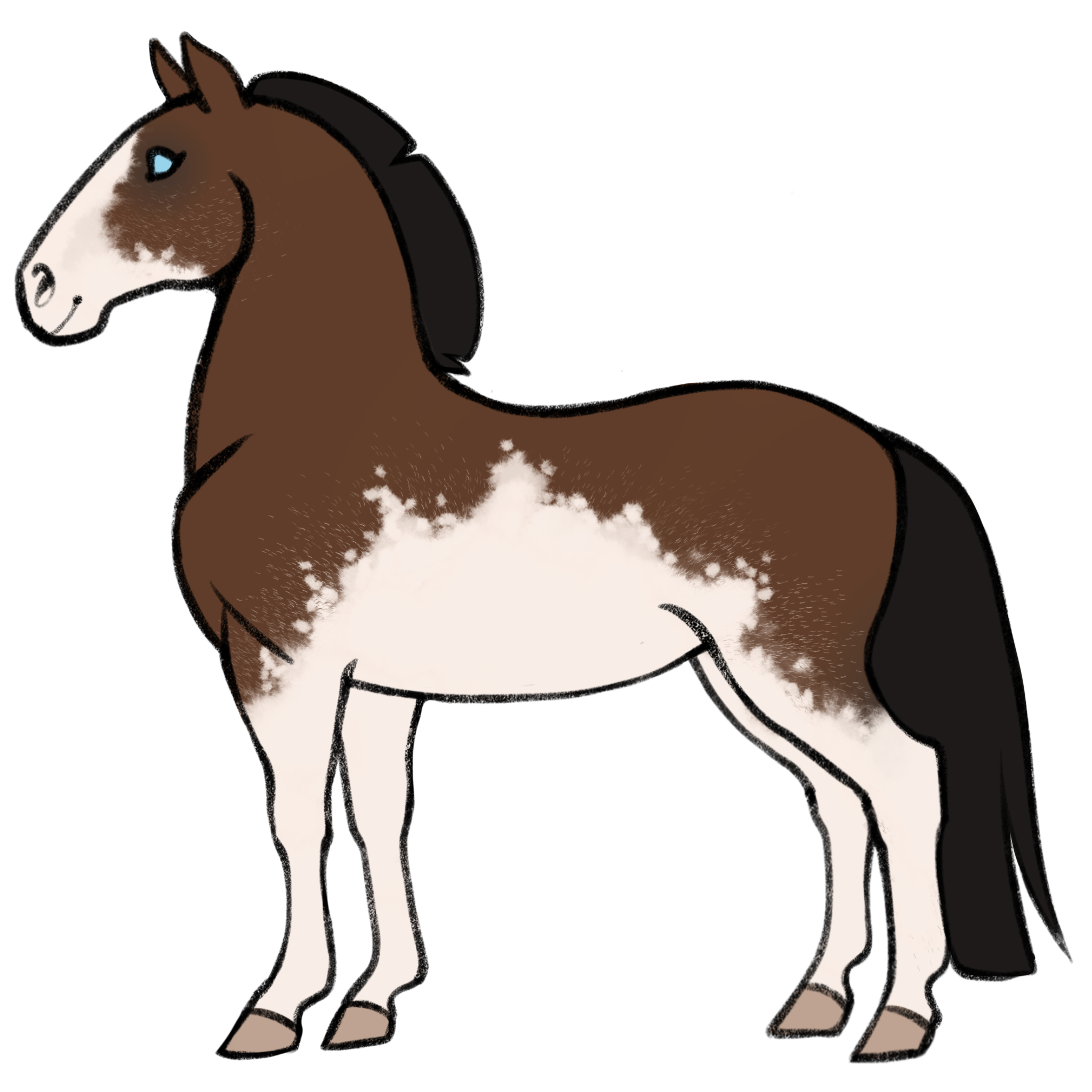

(R_) roan (Natural)
Name: Roan
Base Genotype: R_
Skin Color: No effect.
Eyes: No effect.
Description: Roan causes white hairs to grow, but only on the neck and body of the horse. Roan may have "grease spots" where the base coat of the horse shows through. These are usually small and no bigger than the horse's eye. Roan is a dominant gene, so only one copy is required for it to be visible. Roan has several names for it's variations, which can all be searched on for real-life references:
- "Strawberry Roan" or "Red Roan" : a chestnut horse with roan
- "Bay Roan" : a bay horse with roan
- "Blue Roan" : when a black horse has roan
Design Guidance: At minimum, the coat can be slightly lightened. At maximum, the coat is strongly lightened. Lightening of the coat should not extend onto the horse's head, down past the knees, or down past the hocks on the hind legs. If paired with dun, the dorsal and leg striping will still be visible. Horses may have different variations of the examples below:
An example of minimal roan, and then maximum roan on all three base coats:
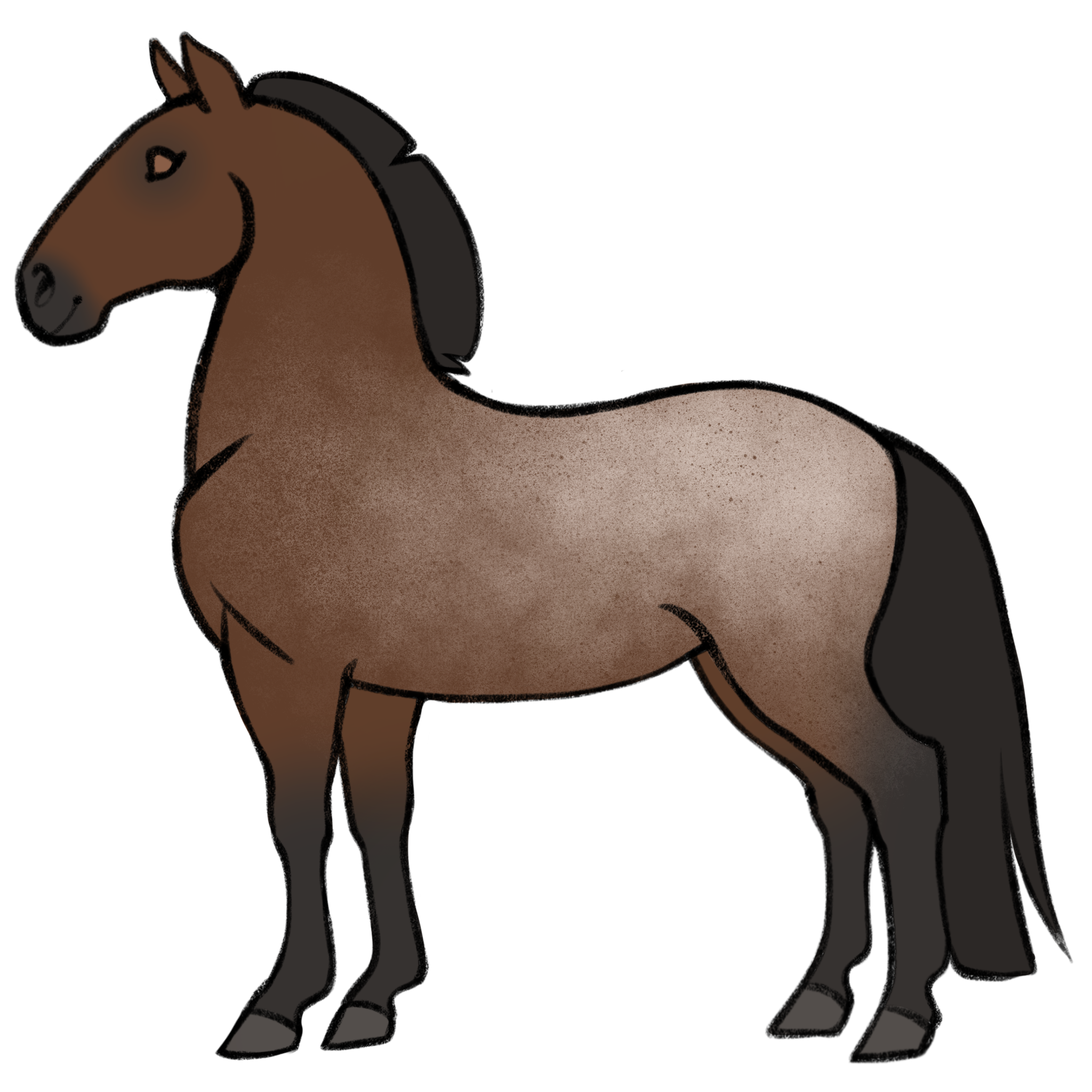
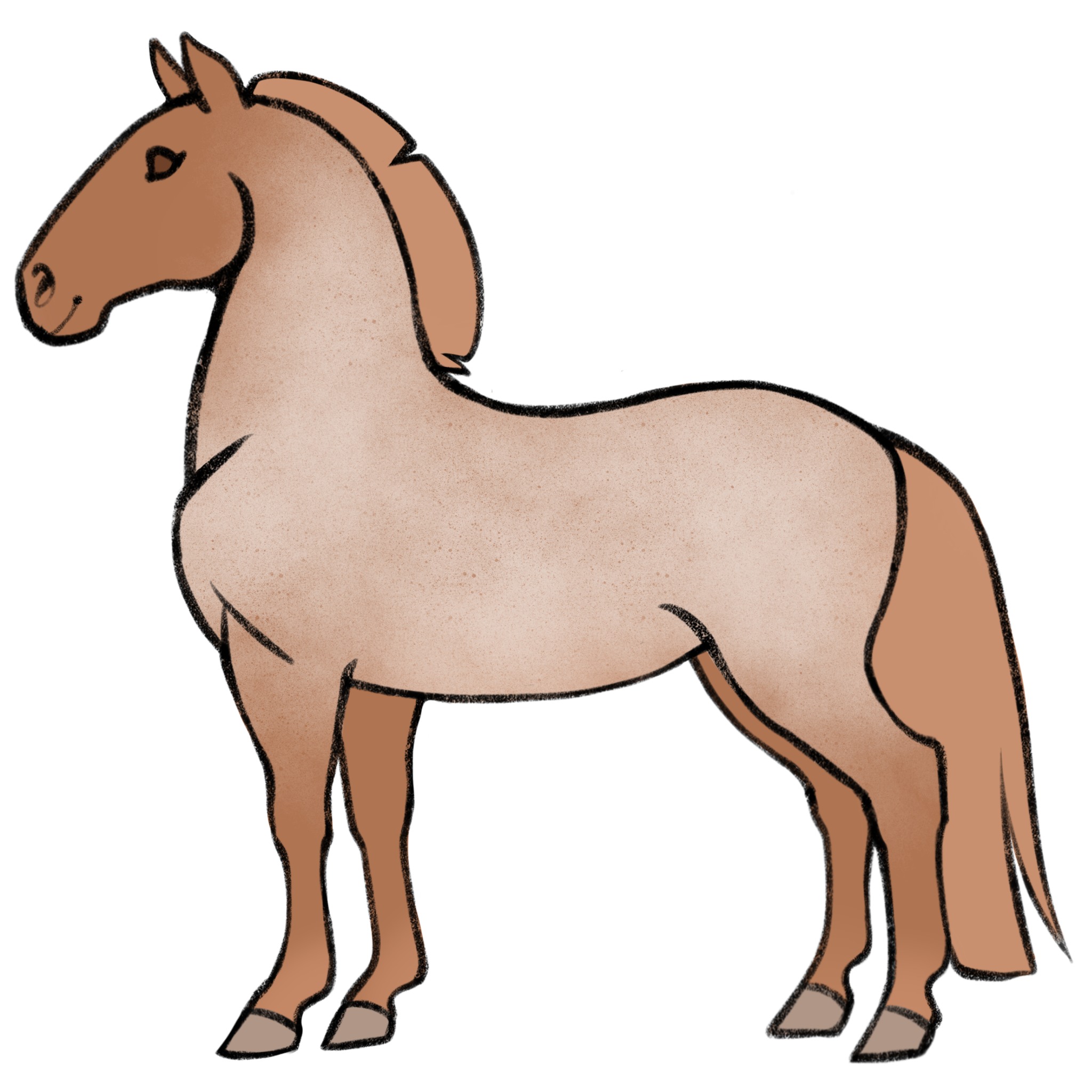
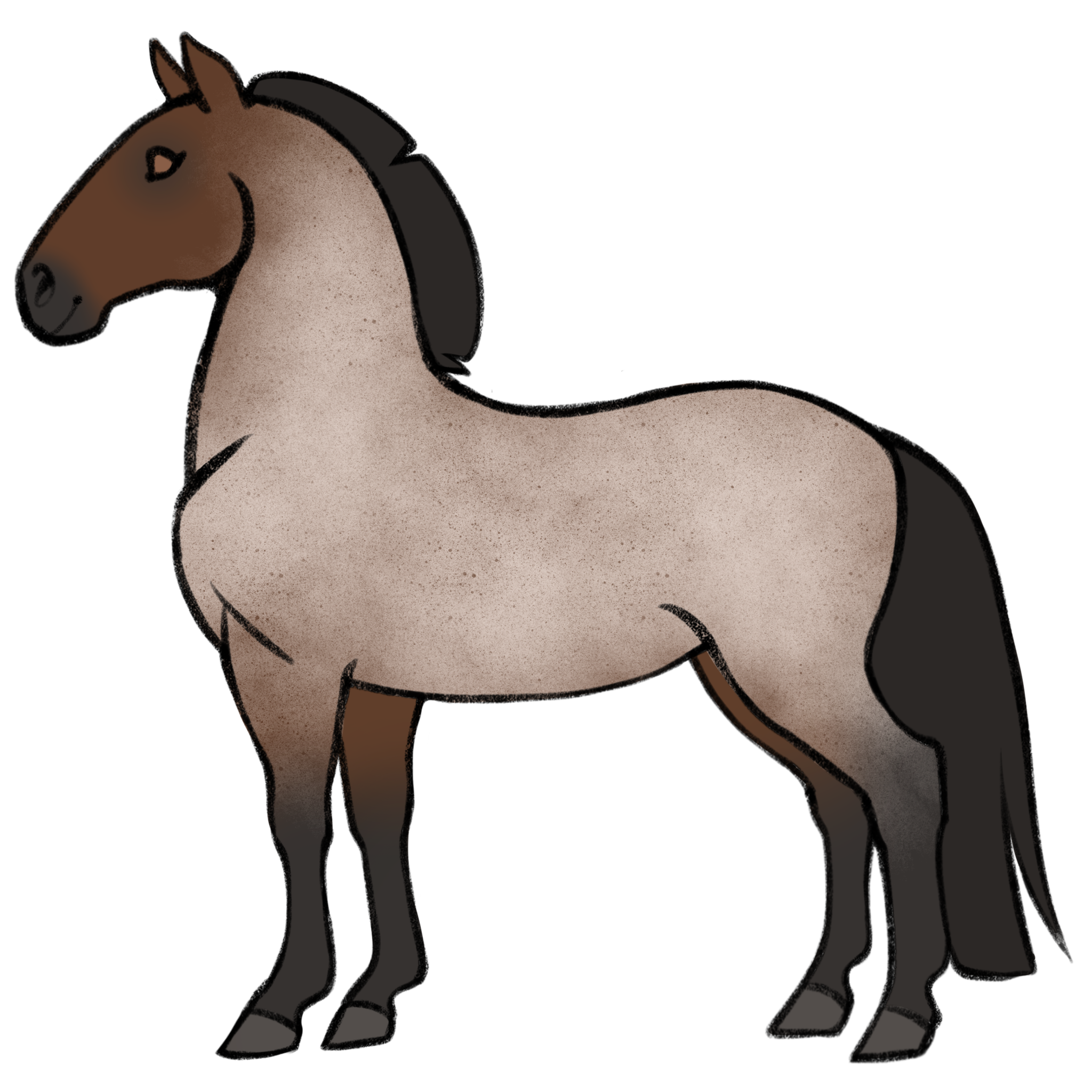

(TO_) tobiano (Natural)
Name: Tobiano
Base Genotype: TO_
Skin Color: Skin becomes pink under white markings.
Eyes: If a white marking touches an eye, it becomes blue. Heterochromia is common.
Description: Tobiano causes large round patches of white that cross over the top of the body. Round patches may have spotting within them (sometimes referred to as "cat tracks") and haloing around the edges. Tobiano may cause a high number of natural white markings on the face and legs. Flashy amounts of white on the legs is common. Facial markings should stay within a natural range on the forehead only, as tobiano does not cause large amounts of facial white like overo. Keep in mind that if a white patch turns the ears of the horse white, the horse is highly likely if not guaranteed to be deaf! Tobiano has several names for it's variations, which can all be searched on for real-life references:
- "Skewbald" : a chestnut or bay horse with tobiano
- "Piebald" : a black horse with tobiano
- "Tovero" : a horse that has both tobiano and overo
- "Medicine Hat" : a tovero horse that is all white, except for a dark patch ("hat") over the ears, and dark patches on the chest and/or flank ("shields.")
Design Guidance: At minimum, the horse may have natural white markings on the face, such as a snip, blaze, or stripe; and at least three legs with white markings that extend above the pastern. At maximum, the horse is nearly all white, with color only visible on the head. Ears are rarely turned white, but it happens (and may cause deafness). The mane and tail is white where it touches white patterned skin. Hooves become light colored where white patterns touch, as does skin.
Examples of a chestnut tobiano, bay tobiano, and a black tovero (medicine hat) horse.

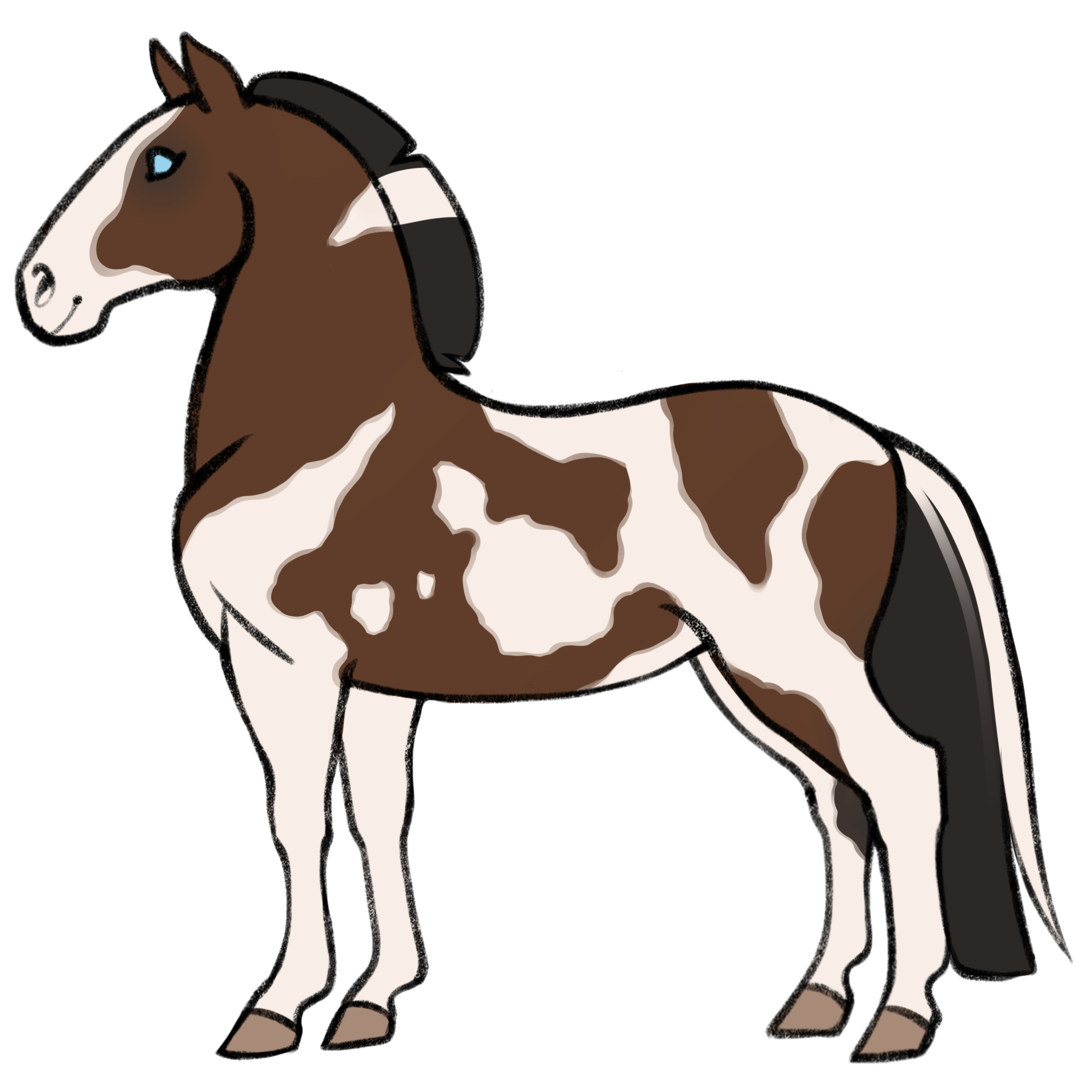
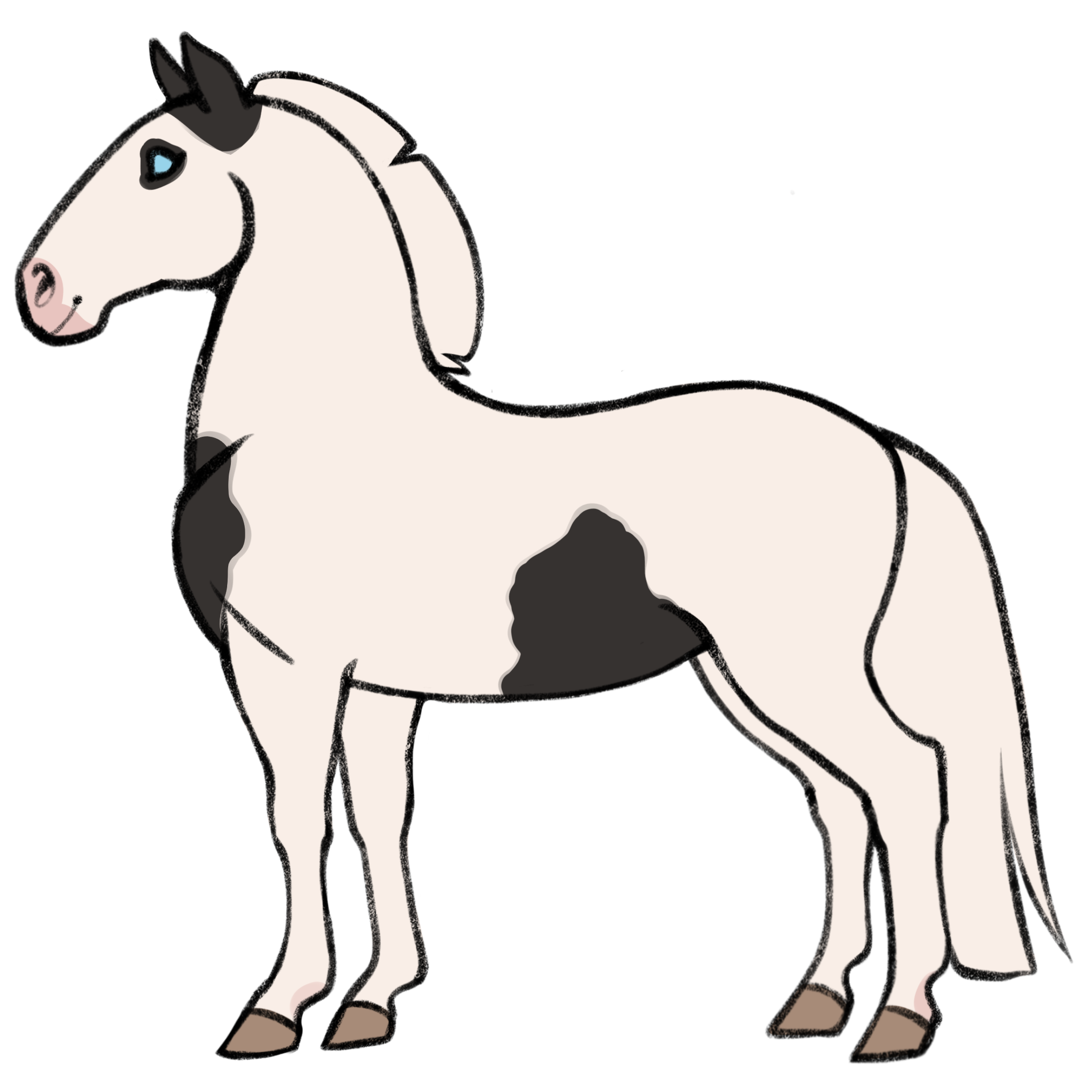
(O_) overo (Natural)
Name: Frame Overo
Base Genotype: O_
Skin Color: Skin becomes pink under white markings.
Eyes: If a white marking touches an eye, it becomes blue. Heterochromia is common.
Description: Frame Overo causes jagged white patches to appear in the center of the horses body when viewed from the side, causing the white to look "framed" by the color of the base coat. Frame Overo by itself will never cross the back of the horse. Facial markings are usually large and striking. Baldface is common, as is "eyeliner" on baldfaced horses. Keep in mind that if a white patch turns the ears of the horse white, the horse is highly likely if not guaranteed to be deaf! Also, if two horses who carry overo are bred together, and the foal inherits both copies of overo, the foal will be marked as deceased due to Lethal White Overo syndrome. You won't get your breeding slot back, so please take care when selecting horses for breeding! Overo has a few variations when combined with tobiano, which can all be searched on for real-life references:
- "Tovero" : a horse that has both tobiano and overo
- "Medicine Hat" : a tovero horse that is all white, except for a dark patch ("hat") over the ears, and dark patches on the chest and/or flank ("shields.")
Design Guidance: At minimum, the horse may have white markings on the face, such as a snip, blaze, badgerface, or baldface; any facial markings are allowed, not just minimal natural facial markings such as with tobiano. At maximum, the white patch covers the entire side of the horse, but still does not cross over the horse's midline. Ears are rarely turned white, but it happens (and may cause deafness). The mane and tail will remain unaffected because overo will never touch the mane or tail, as they are on the midline of the horse. Skin becomes light colored where white patterns touch.
Examples of a chestnut overo with minimal markings, a bay overo with average markings, and a black overo with maximal markings.
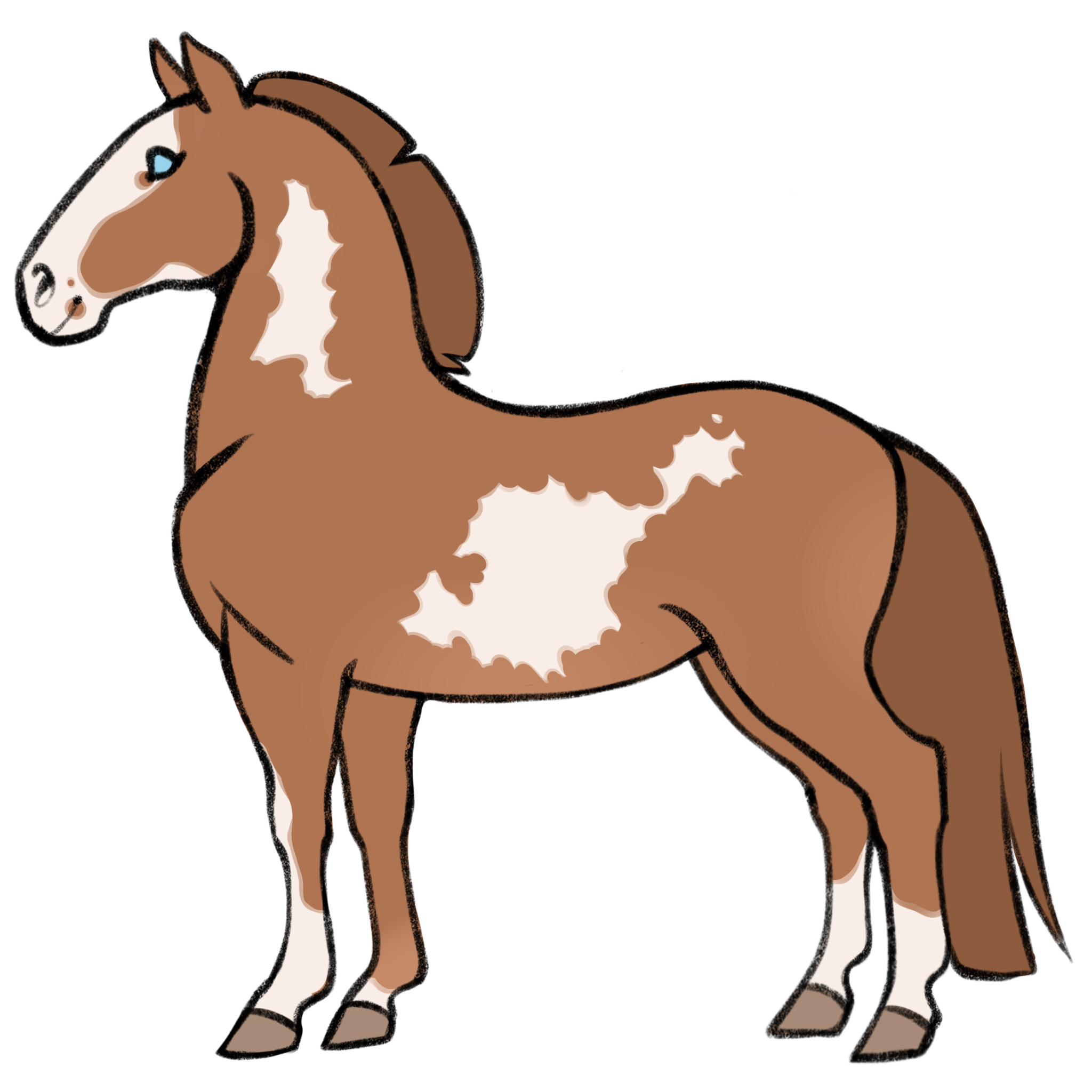

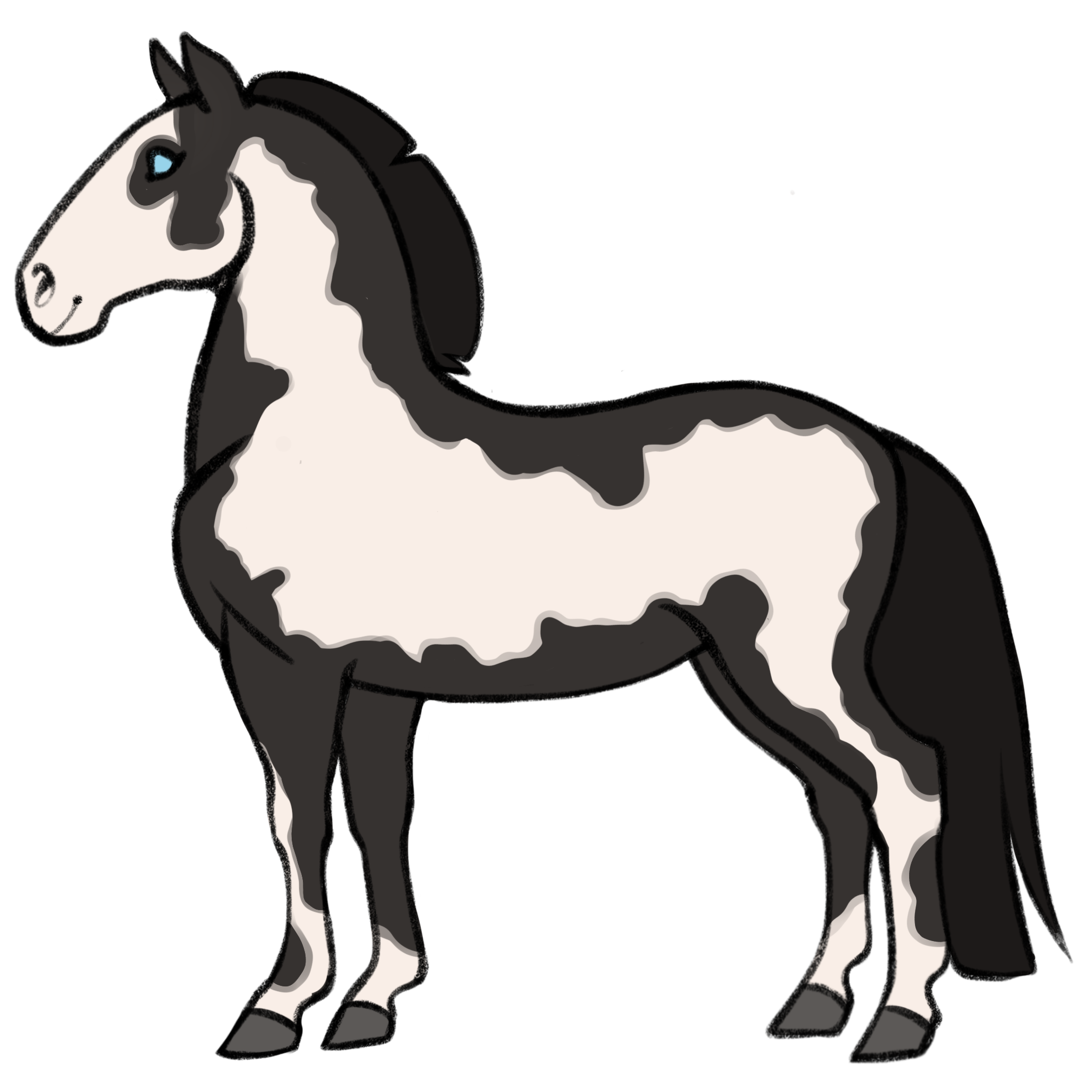
(SPL_) splash (Natural)
Name: splash
Base Genotype: SPL_
Skin Color: Skin becomes pink under white markings.
Eyes: If a white marking touches an eye, it becomes blue. Heterochromia is common.
Description: Splash causes large white patches to appear from the legs of the horse and upwards, as if the horse has been dipped in white paint! Splash by itself will never cross the back of the horse. Facial markings are usually large and striking. Keep in mind that if a white patch turns the ears of the horse white, the horse is highly likely if not guaranteed to be deaf!
Design Guidance: At minimum, the horse must have four white coronet bands. Must have a white marking on the face, such as a snip, blaze, badgerface, or baldface; any facial markings are allowed, not just minimal natural facial markings such as with tobiano.
At maximum, the white covers the entirey of the horse, but still does not cross over the horse's spine. Edges of the white pattern are smooth and sloping, with no spots of base color within the patch. Ears are rarely turned white, but it happens (and may cause deafness). The mane and tail will turn white where touched. Skin becomes light colored where white patterns touch.
Examples of a chestnut splash with maximal markings, a bay splash with average markings, and a black splash with more minimal markings.
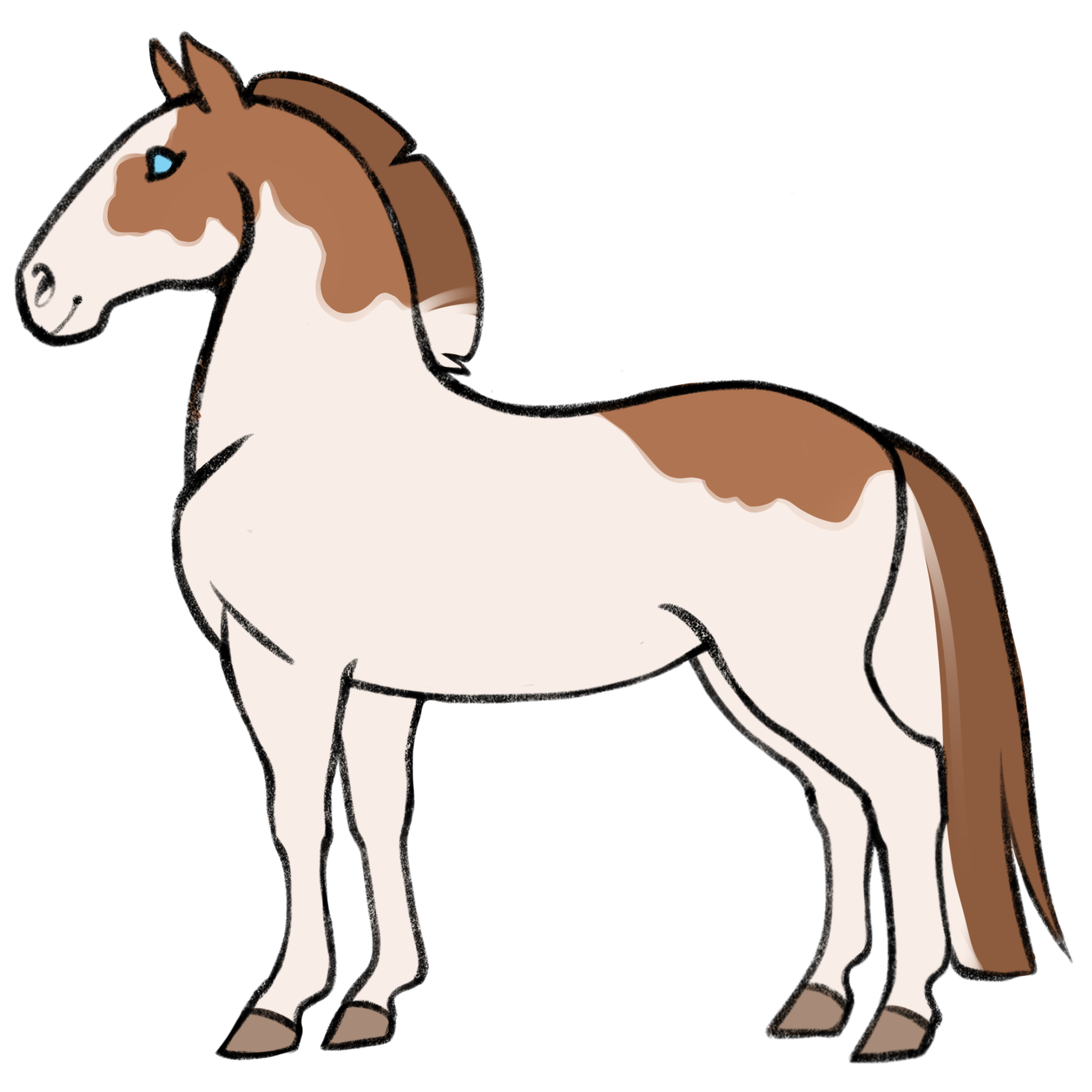
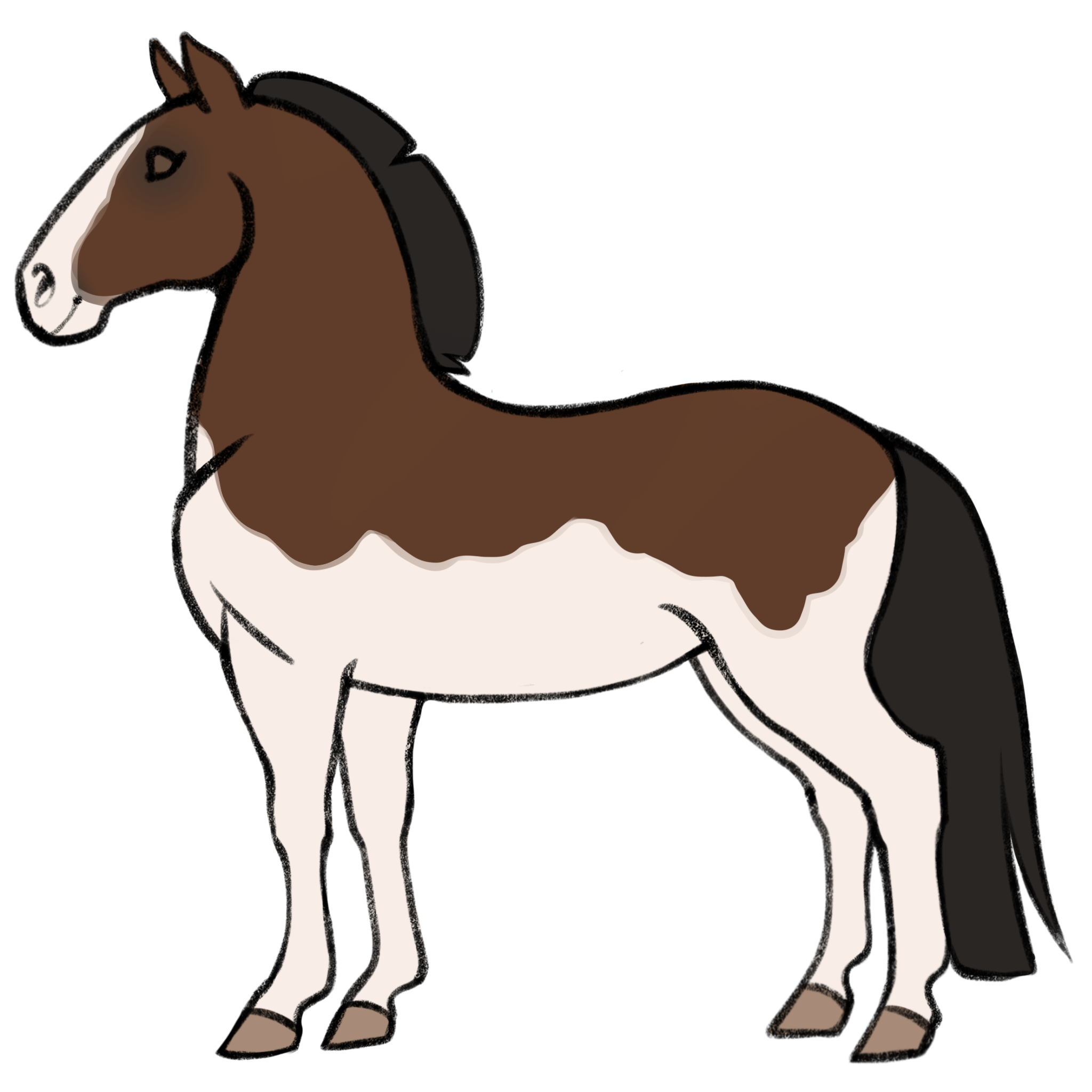
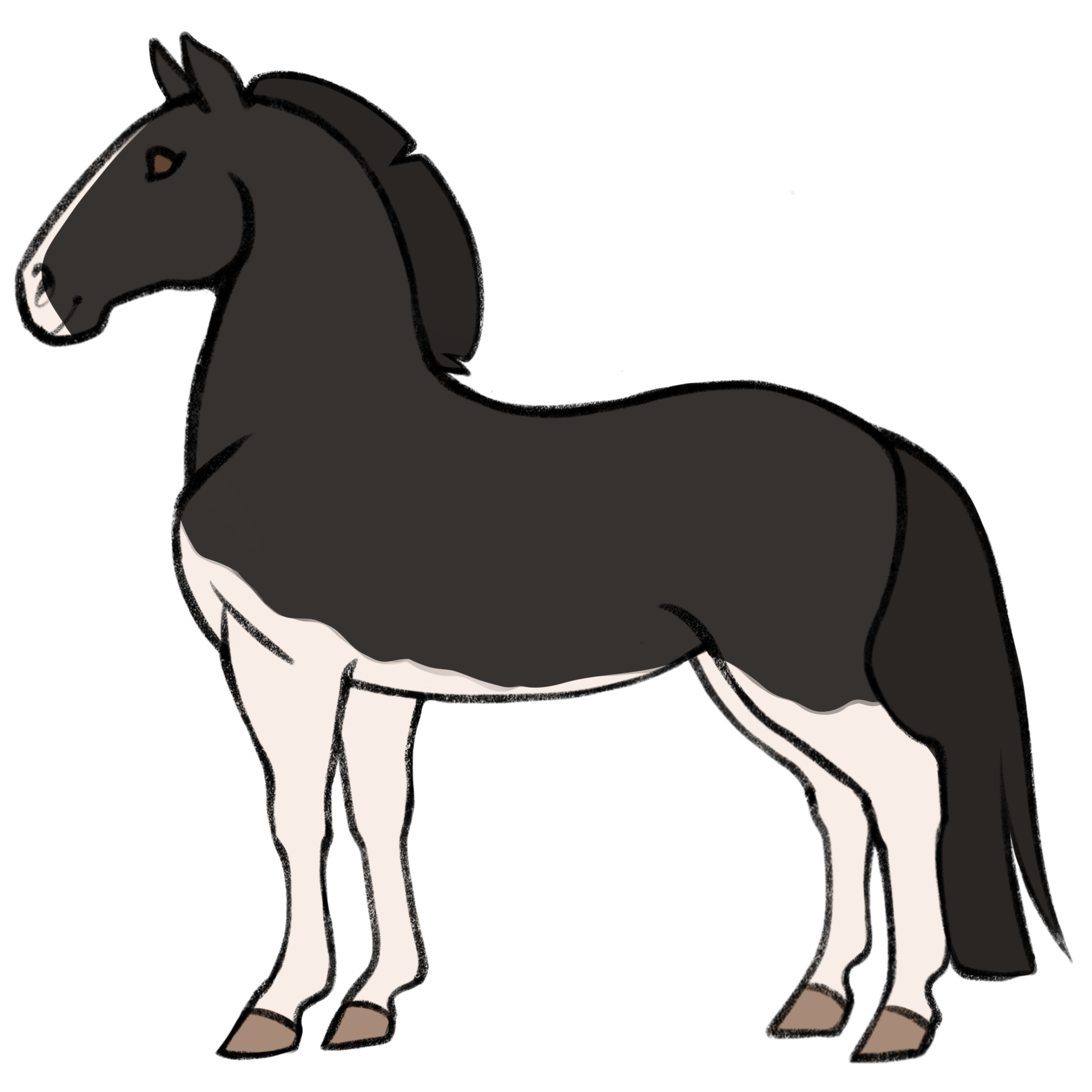
birdcatcher spots (Natural)
Name: Birdcatcher Spots
Base Genotype: Not Inheritable - Anamoly
Skin Color: Skin becomes pink under white markings.
Eyes: If a white marking touches an eye, it becomes blue. Heterochromia is common.
Description: Causes small white spots to appear all over the horse's body. It could be one spot, or twenty. Located anywhere on the body or face.
Design Guidance: Spots should be no larger than the horse's eye, are perfectly round or near oval, may vary in size, and should be chaotically placed. These spots should not be too symmetrical or make flowing/constellation-like designs. They should not be high in number- if a horse with a lot of white spotting is desired, Snowflake Appaloosa is more appropriate.
Example of density and size of spots:
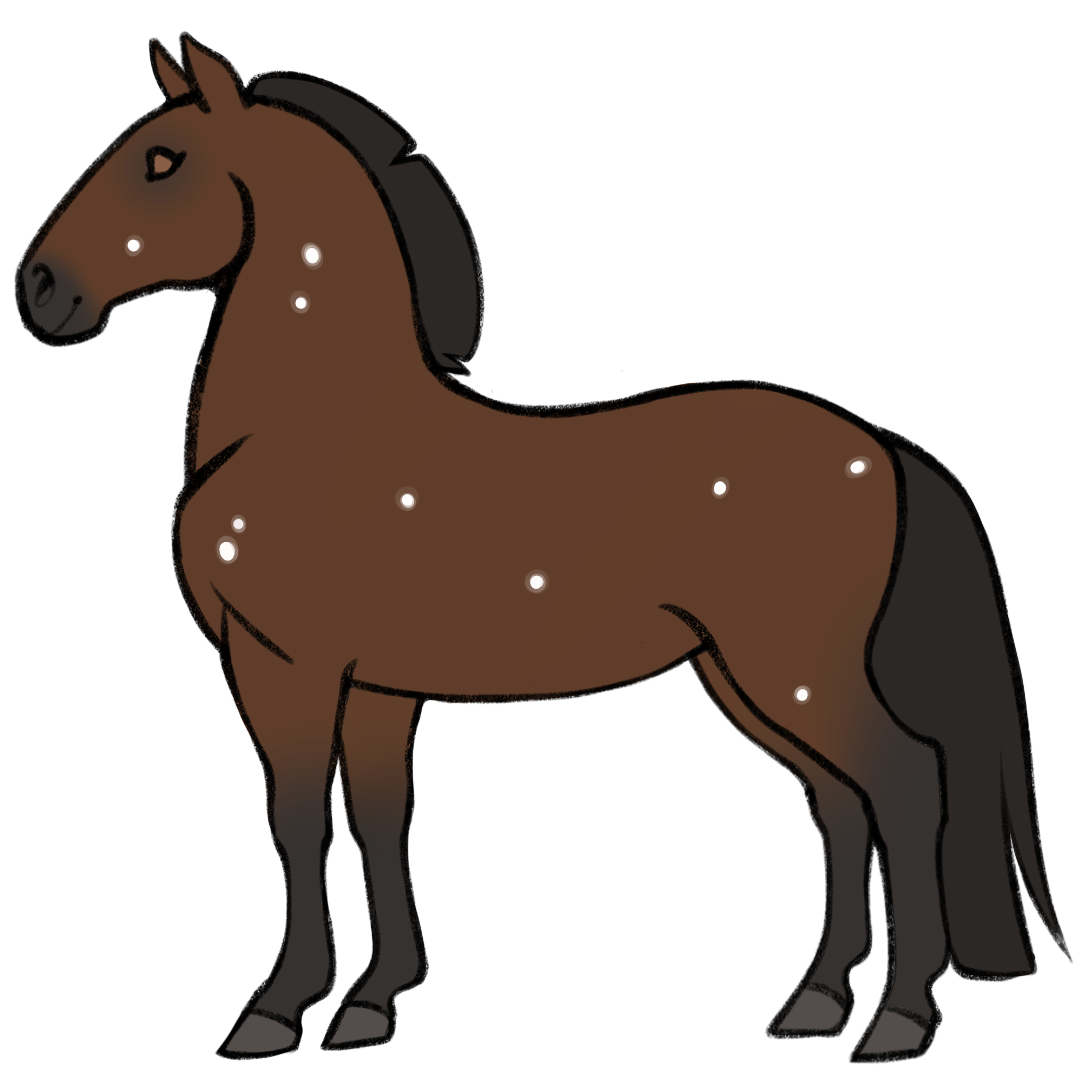
Champion Horse (500 - 599) (Rare)
Rewards for reaching this rank are:
- +5 Breeding Slots (for a total of 20)
- +3 Breed Associated Favor Tokens (if applicable)
Distinguished (400 - 499) (Rare)
Rewards for reaching this rank are:
- +3 Breeding Slots (for a total of 15)
- +2 Breed Associated Favor Tokens (if applicable)
Seasoned (300 - 399) (Uncommon)
Rewards for reaching this rank are:
- +2 Breeding Slots (for a total of 12)
- +1 Breed Associated Favor Token (if applicable)
Refined (200 - 299) (Uncommon)
Rewards for reaching this rank are:
- +3 Breeding Slots (for a total of 10)
- +1 Breed Associated Favor Token (if applicable)
Premier (100 - 199) (Natural)
Rewards for reaching this rank are:
- +2 Breeding Slots (for a total of 7)
- +1 Breed Associated Favor Token (if applicable)
Champion (500 - 599) (Rare)
The rider is known internationally, either famously or infamously, and is recognized by name and face in just about every major city's riding hall. This rider could take any horse through just about any sort of show, trial, or tribulation and generally come out okay on the other side, no matter how green, stubborn, inexperienced, or flighty the horse is. This rider is a firm and guiding presence who regularly seems to pull off the impossible and has plenty of experience in doing so.
Rewards for reaching this rank are:
- +5 to rolls in shows (unless stated otherwise)
- +2 Special Custom Import Tokens
- +2 Lucky Charms
Professional (400 - 499) (Rare)
The rider is a known professional who may be recognized in other countries or cities and is able to bring out the best in just about any horse. They are something to behold in the show ring and their horses are likely highly desired, either as show mounts or breeding stock.
Rewards for reaching this rank are:
- +4 to rolls in shows (unless stated otherwise)
- +1 Special Custom Import Token
- +1 Lucky Charm